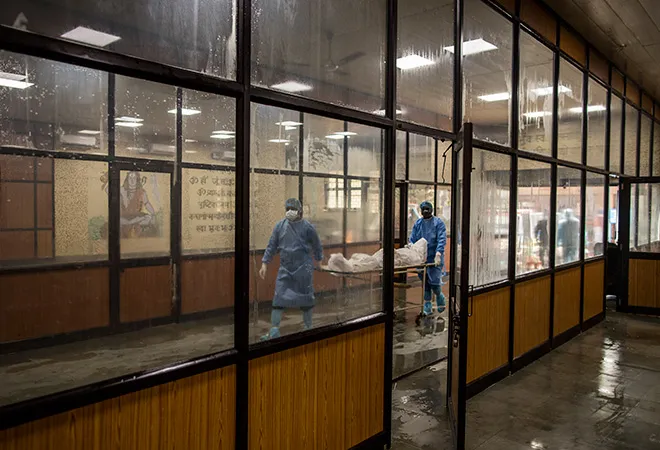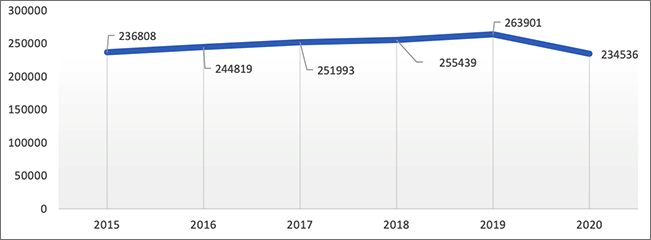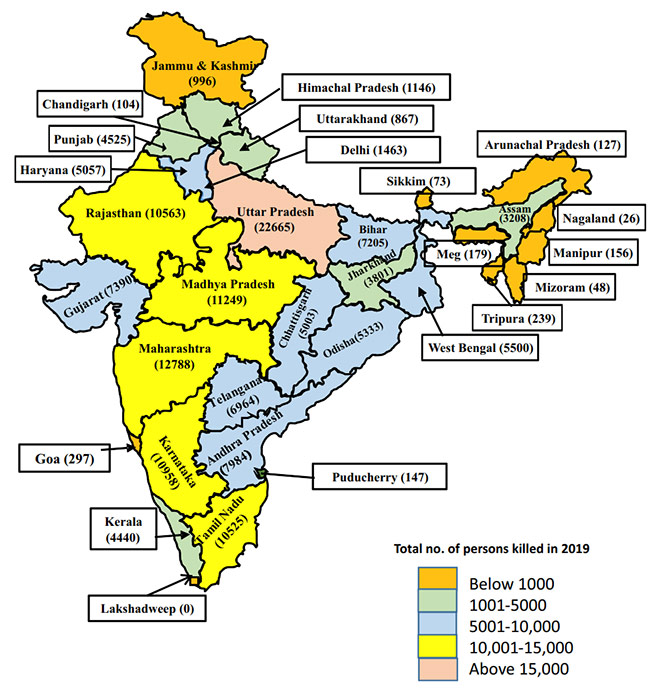
From the beginning of the pandemic, there have been suggestions that India may be severely underreporting COVID-19 deaths. It is a valid concern given the weaknesses of the system and the pressure on officials to demonstrate efficiency, that the true impact of COVID-19 on mortality may not be captured well by the number of reported deaths. For estimating the impact of the pandemic, researchers from the world overuse “excess mortality”, which is defined as the number of deaths from all causes during a crisis above and beyond what we would have expected to see under ‘normal’ conditions, in a ‘normal’ year.
In India’s case, by the second half of 2020, the imagined “excess mortality” and the assumed undercounting of COVID-19 deaths reached mythical proportions, with experts and journalists bending over backwards to prove that the extent of actual deaths is many times the recorded numbers. It was presented as a fact that the true human cost of COVID-19 in India was an ‘invisible disaster’. Some disingenuous researchers even used the overall medically certified causes of deaths data—something that has very little to do with how COVID-19 deaths were reported—to create a template of the quantum of underreporting of COVID-19 deaths in India.
It was naturally expected that as a comprehensive measure of the total impact of the pandemic on deaths, the all-cause-mortality when made available by authorities, would quell all this self-serving speculation. Indeed, there have been some media stories about mortality data from Delhi for a quarterly period in 2020 when the pandemic was raging showing a decline in the number of deaths, as compared to the same time period in 2019. Still, no state or union territory had officially released all-cause mortality for 2020 and 2019 from the Civil Registration System (CRS) till date.
However, Kerala has just released all-cause mortality data with the claim that contrary to all assumptions of deaths in the state going up due to the impact of COVID-19, the total number of deaths in 2020 went down by more than 11% in comparison with 2019. According to CRS data from the state (Graph 1), there is a substantial reduction in the number of deaths in the state. In fact, after increasing steadily for four years till 2019, in the year 2020, the total number of deaths went down to pre-2015 levels. According to the government, when converted to crude death rates, it was 7. 5 per 1,000 population in 2019 and only 6.8 per 1,000 population in 2020, despite the pandemic. This calls into question the perceived mortality impact of the pandemic in the state, both direct and indirect.
Graph 1: Total number of deaths reported in Kerala (2015-2020)
 Source: Technical Paper: Reduction in all-cause mortality in Kerala during COVID-19pandemic, Government of Kerala
Source: Technical Paper: Reduction in all-cause mortality in Kerala during COVID-19pandemic, Government of Kerala
The government of Kerala claims that these low numbers are the result of the preventive and promotive steps taken by the state machinery during the pandemic. The government also concedes that robust CRS data are not available in the rest of India as COVID-19 resulted in a big drop in registration of vital events. At the same time, since 92 percent of births have been registered by CRS in the state in 2020 as compared to 2019, the deaths data is also deemed to be relatively complete, despite the possibility of some delay in registering a small proportion of 2020 deaths.
Given the fact that the total number of deaths in 2020 for some countries were more than 50 percent higher in 2019, often exceeding the reported numbers of COVID-19 deaths by large margins, such counterintuitive data from an Indian state with a robust vital registration system merits attention, although the state was caught hiding some COVID-19 deaths in 2020. Using disaggregated level data made available by the government, all-cause mortality data for all the 14 districts were compared between 2019 and 2020 (Table 1). A consistent decline in all-cause mortality across all districts was observed, amounting to 26,849 for the whole state.
Table 1: All-cause mortality in districts of Kerala in 2019 and 2020
| District |
Recorded COVID-19 Deaths |
Total Deaths 2019 (CRS) |
Total Deaths 2020 (CRS) |
Difference (2020-2019) |
| EKM |
390 |
21,920 |
19,602 |
-2,318 |
| MPM |
385 |
22,159 |
20,633 |
-1,526 |
| KKD |
394 |
27,180 |
24,132 |
-3,048 |
| TVM |
747 |
32,678 |
28,904 |
-3,774 |
| TSR |
394 |
30,450 |
27,386 |
-3,064 |
| KLM |
265 |
21,204 |
18,652 |
-2,552 |
| ALP |
303 |
17,231 |
15,463 |
-1,768 |
| KTM |
183 |
20,667 |
17,918 |
-2,749 |
| PKD |
171 |
19,075 |
17,681 |
-1,394 |
| KNR |
258 |
19,493 |
17,813 |
-1,680 |
| PTA |
90 |
12,576 |
11,145 |
-1,431 |
| KGD |
93 |
7,691 |
7,337 |
-354 |
| IDK |
33 |
6,919 |
6,287 |
-632 |
| WYD |
70 |
4,739 |
4,180 |
-559 |
| KERALA |
3,776 |
263,982 |
237,133 |
-26,849 |
Source: Local Self Government Department, Government Of Kerala, data as on 3rd February 2021.
Assuming that most of the deaths from 2020 are already registered, some of this reduction can still be a result of deaths averted by the decreased economic activity, mobility, and the overall lockdown resulting in reduced road traffic or industrial accidents, or even reduced number of deaths from infectious diseases. However, the fact remains that Kerala historically had a very low proportion of deaths due to infectious diseases, and had only 4,440 deaths by road accidents (Map 1) in 2019. Latest data suggest that in 2020, there was no sharp reduction in accident mortality even with lockdown, with almost 3,000 deaths registered in the state. Even if one takes all the accidental deaths from the state (13,623 in 2019), it only constitutes half of the 27,000 “deficit deaths” in the state. In a state where the media claimed—irrationally—that there was a spike in adolescent suicides due to stress linked to the lockdown, the fall in the number of total deaths in 2020 seems significant.
Map 1: Number of People Killed in Road Accidents in 2019
 Source: Road Accidents in India – 2019 (Ministry of Road Transport and Highways, Government of India)
Source: Road Accidents in India – 2019 (Ministry of Road Transport and Highways, Government of India)
In August 2020, more than 200 researchers, scientists, journalists, and public health professionals from across the country and beyond had urged the Government of India to release all-cause mortality data, so that “excess mortality” due to COVID-19 can be calculated. According to them, at no other point in the history of India has the data collected by CRS been so important. Now that a state with the second highest number of registered COVID-19 cases in the country has made available district level all-cause mortality data for 2020 and 2019 (in fact, till 2012), it is hoped that these experts representing many prominent Indian and global institutions will start working on the dataset right away to find answers.
The views expressed above belong to the author(s). ORF research and analyses now available on Telegram! Click here to access our curated content — blogs, longforms and interviews.




 Source:
Source:  Source: Road Accidents in India – 2019 (Ministry of Road Transport and Highways, Government of India)
Source: Road Accidents in India – 2019 (Ministry of Road Transport and Highways, Government of India) PREV
PREV


